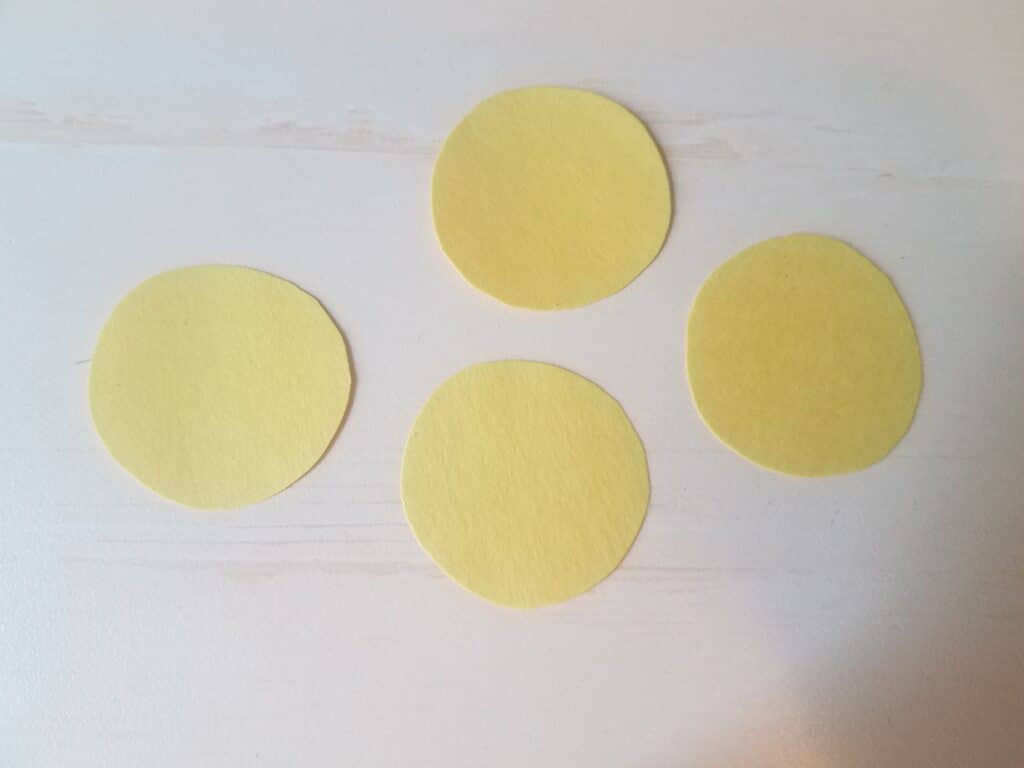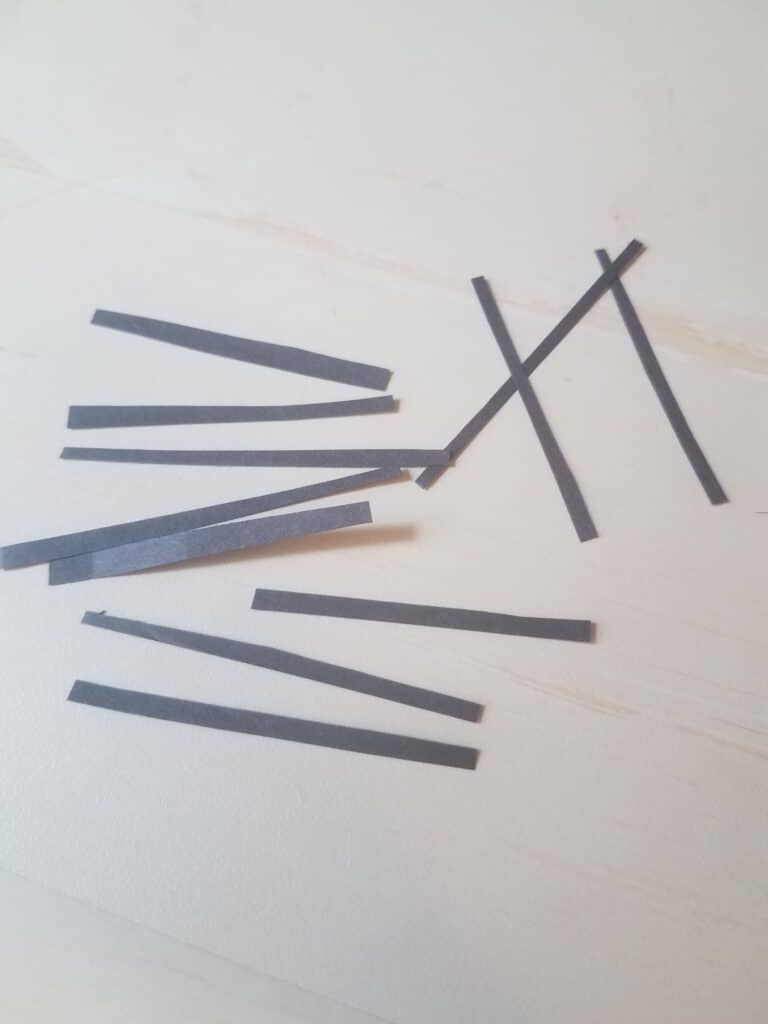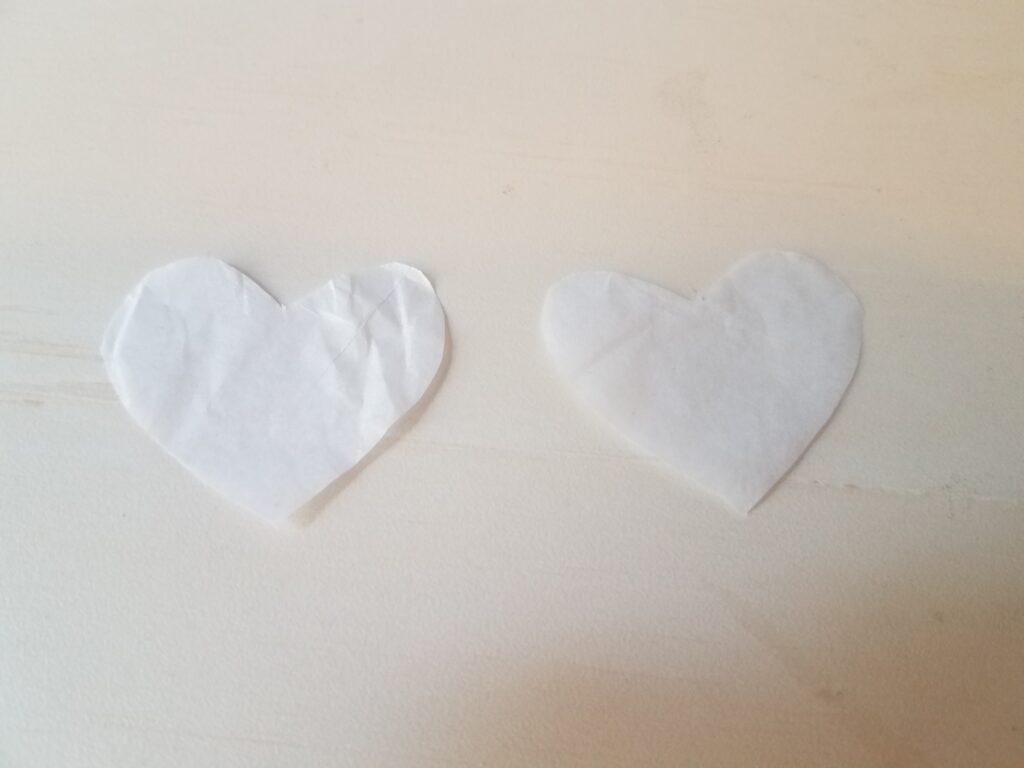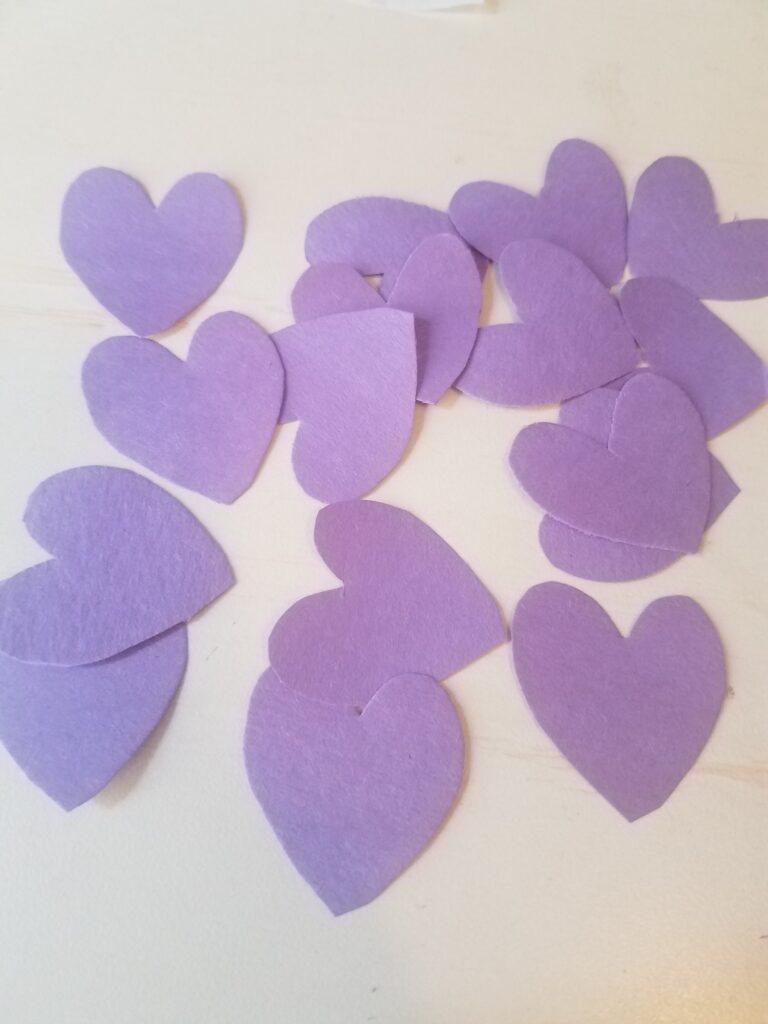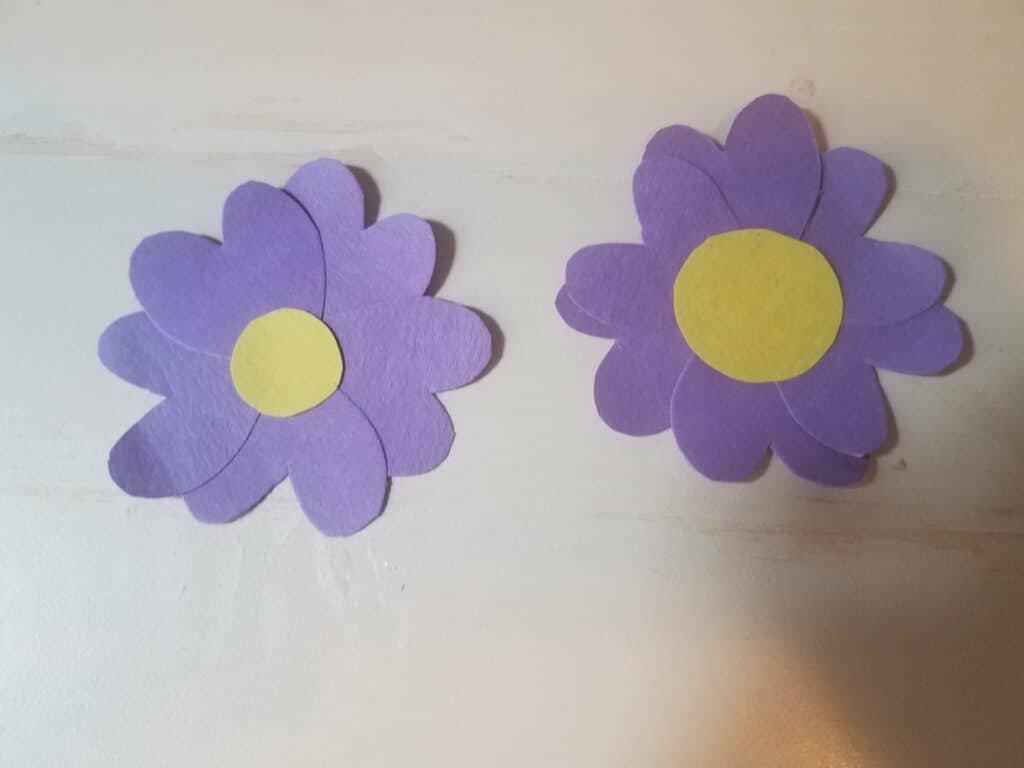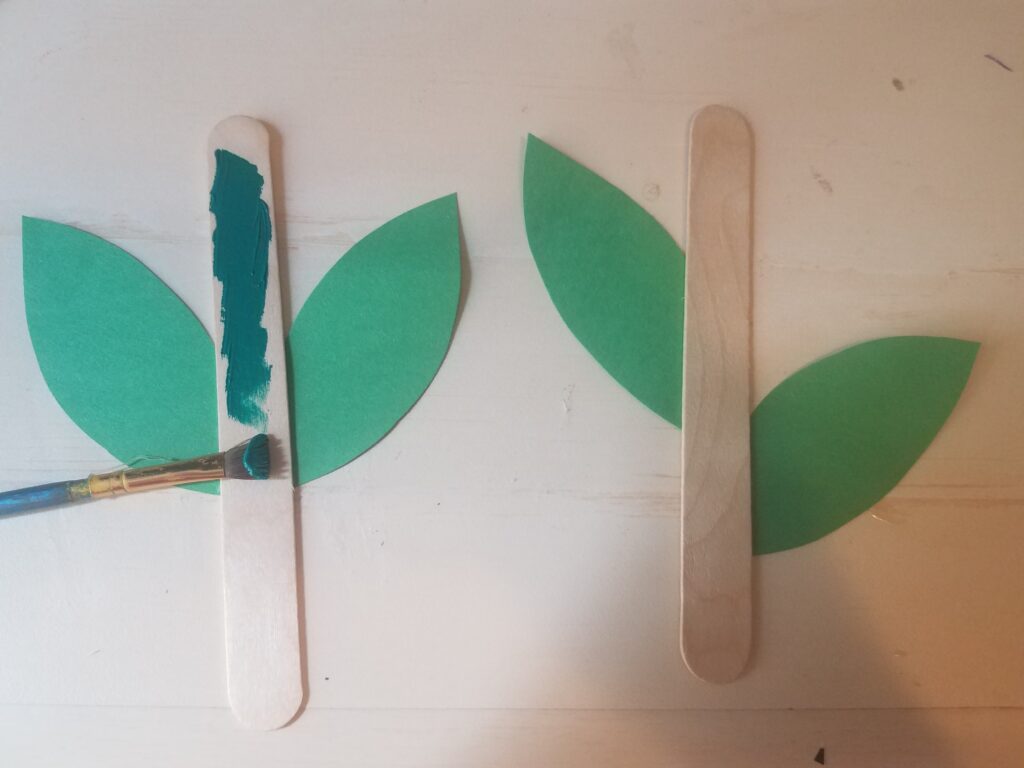Target age:
5-10
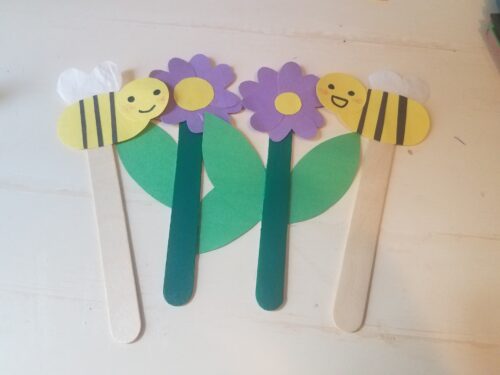
Academic subject areas:
Science and Art Next Generation & State
During/by the end of this activity, participants will:
Use their fine motor skills to cut, glue and paint.
Use their creativity to design their bees and flowers how they’d like.
Define “pollinator” by describing the honeybees’ job.
Develop a respect for bees and pollinators by having a better understanding of their importance.
Duration:
15-25 minutes
Materials:
Popsicle sticks (4)
Yellow, black, white, purple, green construction paper
Paint brush
Green paint
Glue
Scissors
Instructions:
Set Up: Cut yellow construction paper into 4 circles and into 2 ovals. Cut the black construction paper into thin black lines (4 or 6 lines) we will want these lines to fit onto the ovals. Cut 2 heart shape in the white construction paper, this will look like wings for our bees. Cut more heart shapes (about 10) out of the purple construction paper. These will be petals for your flowers. Cut 2-4 leaves from your green construction paper.
Steps: 1.) Glue the yellow circle to the yellow oval so it will resemble a bee body. Repeat once so there are 2.
2.) Glue the thin black stripes to the body of the bee. Trim off any excess. Each bee body can comfortably fit 2-3 stripes.
3.) Glue the white heart wings to each bug on their backs.
4.) Glue the popsicle sticks to the bees
5.) give your bees some fun faces
6.) Add antenna to the bee’s heads
7.) Glue the 5 (or so) purple hearts together so they make a circle. And then add a yellow circle to the center, repeat this once. These will be flowers!
8.) Glue the leaves to 2 of the popsicle sticks.
9.) Paint the plant’s popsicle sticks10.) Glue the flower heads to the popsicle sticks.
Wrap Up: Now that the bees and flowers are finished, the bees can fly around and pollinate the flowers.
Interesting facts on bees: Honeybees harvest nectar and pollen from flowering plants.
Male bees in the hive are called drones and they do not have a stinger. We usually do not see these bees outside the hive.
Worker bees (the ones we see flying and on flowers) are females. Honeybees live in large groups called colonies.
An average beehive can hold around 50,000 bees.
Honeybees do not want to sting you! If you leave a honeybee alone it will continue its important job of pollination.
Pollination is the process that allows plants to create seeds. Pollination happens when pollen falls on the pistil of the flower. Pollen is produced by the anther of the flower. This is helped by butterflies, birds, flies, bees, and the wind! The animals that help with pollination are called pollinators. Pollinators help plants grow! They are very important to our planet. They are responsible for the clean air that we breathe, the foods we eat, and the trees and flowers we enjoy. http://naturemappingfoundation.org/natmap/facts/honey_bee_k6.html

